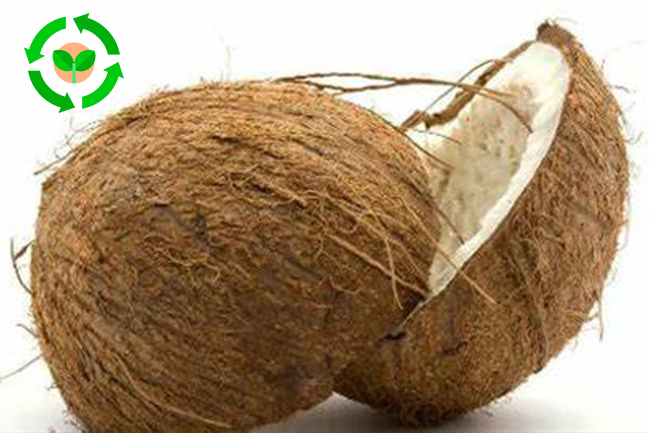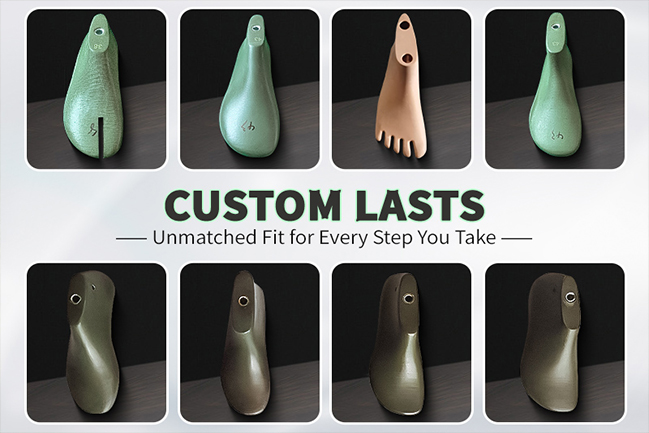As global climate change and environmental pollution become increasingly serious, sustainable development has become a global consensus. In the field of footwear, the development of sustainable upper materials has become an important way to promote the green transformation of the industry. As a factory specializing in custom barefoot shoes, we have the obligation and responsibility to promote the green and sustainable development of the industry. This article will introduce the principles for selecting sustainable upper materials in order to provide a reference for footwear companies.
The principles for selecting sustainable uppers are mainly explained from two aspects: “environmentally friendly materials” and “resource-saving materials”. “Due to space constraints, this article mainly discusses the “environmentally friendly” aspect. Please refer to the next article for the “resource conservation” aspect.
Principles for selecting environmentally friendly materials:
1. Select biodegradable or recyclable materials, such as natural rubber, plant fibers, etc. to reduce negative impacts on the environment.
2. Consider carbon emissions during the production and processing of materials, and give priority to materials with low carbon footprints.
3. Avoid using chemicals that are harmful to the ecosystem, such as heavy metals, plasticizers, etc.
Application of natural materials in shoe uppers
Application of natural rubber in shoe upper materials
1. Natural rubber has high elasticity and wear resistance, and is an important choice for shoe upper materials. It has a wide range of sources, mainly from rubber tree sap, and is renewable.
2. In shoe upper materials, the use of natural rubber can reduce dependence on non-renewable resources such as petroleum, which is in line with the concept of sustainable development. According to relevant data, about 1.5 million tons of rubber are produced worldwide each year. 100 million tons of natural rubber are used in the production of uppers.
3. Studies have shown that by improving the processing technology of natural rubber, its performance can be improved, such as increasing anti-aging properties, extending the service life of shoes, reducing the frequency of replacement and thus reducing the environmental burden.
Application of hemp fiber in upper materials
1. Hemp fiber has the characteristics of natural environmental protection, antibacterial, and breathable, and is suitable for upper materials. Its source is sustainably planted hemp plants, which is conducive to reducing damage to the environment.
2. The application of hemp fiber upper materials helps to reduce the use of synthetic materials such as plastics and reduce the impact on the environment. According to market research, the market share of hemp fiber upper materials has increased year by year.
3. The development of hemp fiber upper materials can be combined with modern processing technologies, such as nanotechnology, to improve its waterproof and wear-resistant properties, making it more competitive in the footwear market.
Application of coconut fiber in shoe upper materials
1. Coconut fiber is light, breathable, and antibacterial, making it an ideal choice for shoe upper materials. Coconut fiber comes from coconut shells and is a renewable resource.
2. The application of coconut fiber upper materials helps reduce the use of non-renewable resources such as petroleum and reduce carbon emissions. According to statistics, the use of coconut fiber upper materials can reduce carbon emissions by about 30%.
3. The development of coconut fiber upper materials needs to focus on improving their strength and durability to meet the needs of different consumers. At present, the application of coconut fiber upper materials in the field of outdoor sports shoes and casual shoes is gradually increasing.
Application of corn starch-based upper materials
1. Corn starch-based upper materials are biodegradable materials with advantages such as environmental protection and sustainability. The raw materials are widely available, which is conducive to reducing dependence on petroleum resources.
2. The application of corn starch-based upper materials can reduce the impact of traditional upper materials on the environment. According to relevant research, the use of corn starch-based upper materials can reduce carbon dioxide emissions by about 80%.
3. The development of corn starch-based upper materials needs to focus on their performance optimization, such as improving tensile and compression resistance to meet the needs of different consumers.
Application of bamboo fiber in upper materials
1. Bamboo fiber is a natural, environmentally friendly, antibacterial and breathable material suitable for upper manufacturing. Bamboo grows fast and has abundant resources, which is conducive to sustainable development.
2. The application of bamboo fiber upper materials helps to reduce the use of non-renewable resources such as petroleum and reduce the environmental burden. Data shows that the market demand for bamboo fiber upper materials is increasing year by year.
3. The development of bamboo fiber upper materials should focus on improving their wear resistance, wrinkle resistance and other properties to meet consumers’ high requirements for upper materials.
Application of silk protein in shoe upper materials
1. Silk protein has excellent biodegradability, breathability and comfort, and is an ideal choice for shoe upper materials. Silk protein comes from silkworm cocoons and is a renewable resource.
2. The application of silk protein shoe upper materials helps to reduce the impact of traditional shoe upper materials on the environment. Studies have shown that the use of silk protein shoe upper materials can reduce carbon emissions by about 50%.
3. The development of silk protein shoe upper materials needs to pay attention to its processing technology, such as using biotechnology to improve its performance to meet consumers’ demand for environmentally friendly and comfortable shoe uppers.
Our company’s practical application
1. Natural leather: Natural leather mainly includes cowhide, pig skin, sheepskin, etc. It has good breathability, warmth retention, wear resistance and weather resistance. In shoe upper design, natural leather can be applied to the upper, upper, sole and other parts. Such as sports shoes, casual shoes, formal shoes, business shoes, etc. Click to view the corresponding product link.
2. Natural fiber: mainly includes cotton, linen, silk, wool, etc. It has good moisture absorption and perspiration, breathability and warmth retention. Its durability and wrinkle resistance can be further improved by compounding. Two or more materials are often used in combination when making the upper.
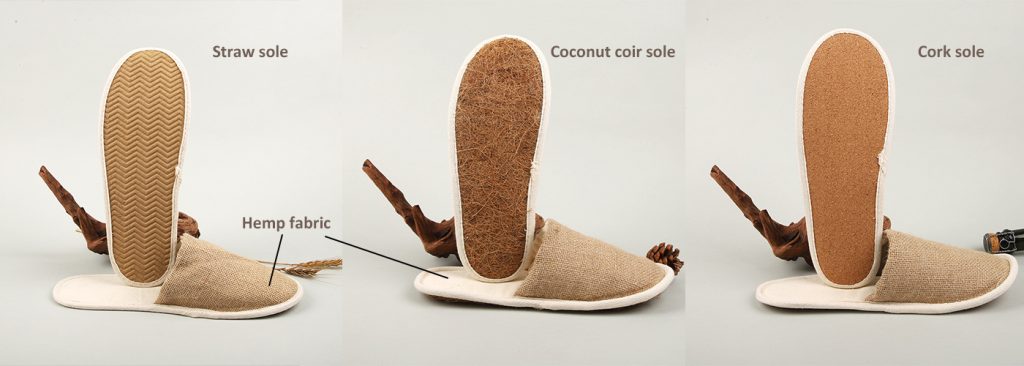
3. Coconut fiber and bamboo fiber: In addition to being used on the upper, they are also often used as insoles and soles for indoor shoes.
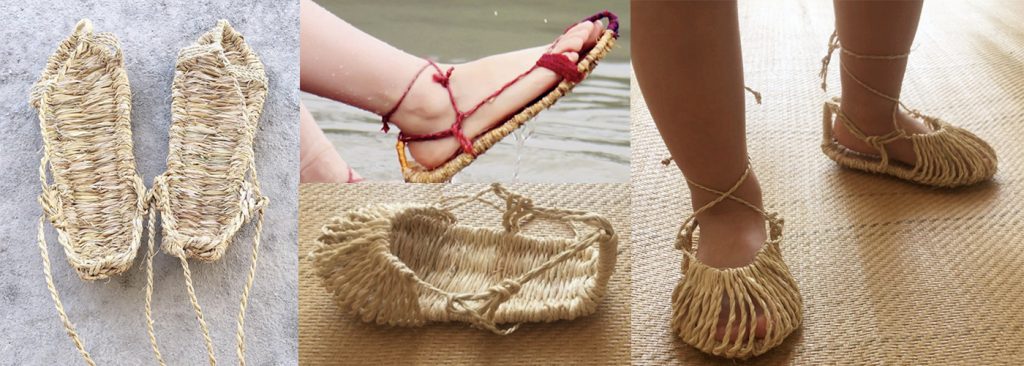
4. Corn husk: China’s traditional straw sandals have been made from a variety of raw materials since ancient times, and corn husk is one of the common raw materials. This type of straw sandals is still very popular in Guangxi Province and other regions in China.
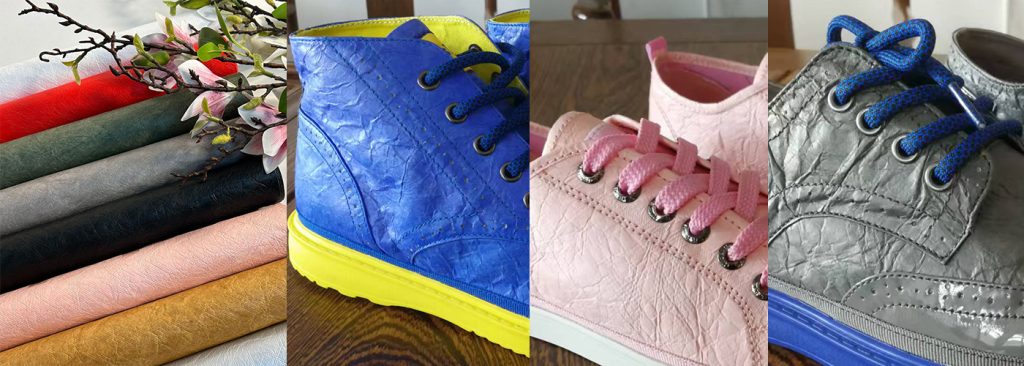
5. DuPont paper: waterproof and breathable, degradable but not puncture-resistant. It can be customized in various colors, and can also be compounded with other materials to improve performance.

